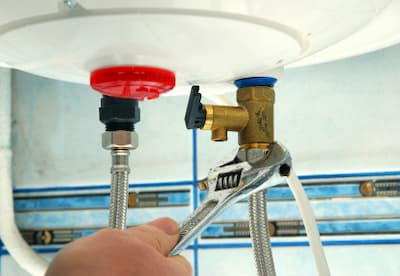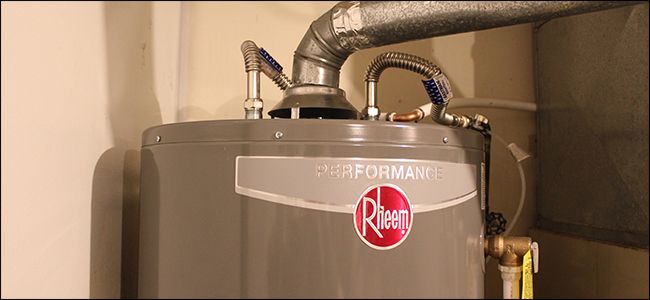Key Maintenance Strategies for Your Home's Hot Water SystemMaking Sure Durability of Your Home's Hot Water System: Care Tips
Key Maintenance Strategies for Your Home's Hot Water SystemMaking Sure Durability of Your Home's Hot Water System: Care Tips
Blog Article
They are making several great observations about Tips on Maintaining a Water Heater in general in the article which follows.

Warm water is essential for daily convenience, whether it's for a revitalizing shower or cleaning recipes. To guarantee your warm water system runs efficiently and lasts longer, regular maintenance is key. This short article supplies sensible pointers and understandings on just how to keep your home's hot water system to avoid disruptions and costly repair work.
Introduction
Preserving your home's hot water system might appear challenging, but with a few basic steps, you can guarantee it runs smoothly for many years to find. This guide covers everything from recognizing your hot water system to DIY maintenance pointers and recognizing when to hire professional assistance.
Value of Maintaining Your Warm Water System
Normal upkeep not only expands the lifespan of your hot water system but additionally ensures it runs effectively. Ignoring maintenance can lead to lowered performance, higher energy expenses, and also early failing of the system.
Indicators Your Warm Water System Needs Maintenance
Knowing when your hot water system needs attention can avoid significant issues. Keep an eye out for indicators such as inconsistent water temperature, strange sounds from the heating system, or rustic water.
Comprehending Your Hot Water System
Prior to diving right into maintenance tasks, it's helpful to recognize the standard elements of your hot water system. Typically, this consists of the hot water heater itself, pipes, anode poles, and temperature level controls.
Regular Monthly Maintenance Tasks
Normal regular monthly checks can help capture minor concerns prior to they escalate.
Flushing the Hot Water Heater
Purging your hot water heater eliminates sediment build-up, enhancing efficiency and lengthening its life.
Checking and Replacing Anode Rods
Anode poles avoid deterioration inside the storage tank. Evaluating and replacing them when broken is important.
Inspecting and Readjusting Temperature Setups
Adjusting the temperature level settings makes certain ideal performance and security.
DIY Tips for Upkeep
You can carry out numerous maintenance jobs yourself to maintain your hot water system in leading condition.
Looking for Leaks
Regularly check pipes and links for leaks, as these can cause water damage and greater costs.
Evaluating Stress Relief Valves
Examining the pressure safety valve ensures it works correctly and avoids too much pressure build-up.
Shielding Pipes
Protecting hot water pipes lowers heat loss and can conserve power.
When to Call an Expert
While do it yourself maintenance is useful, some concerns need specialist proficiency.
Complicated Problems Calling For Professional Assistance
Instances include major leaks, electric troubles, or if your water heater is constantly underperforming.
Regular Professional Maintenance Perks
Specialist maintenance can include detailed examinations, tune-ups, and making certain compliance with security requirements.
Verdict
Regular maintenance of your home's hot water system is necessary for performance, longevity, and expense financial savings. By complying with these ideas and recognizing when to seek professional assistance, you can make sure a reputable supply of warm water without unanticipated disruptions.
Water Heater Maintenance: The Basics
Maintaining your water heater will ensure it operates efficiently and has a longer lifespan. Neglecting regular maintenance can lead to costly repairs and an even bigger chunk of your savings if you have to replace it sooner than necessary. But there’s good news: Most water heater maintenance tasks are relatively simple and easy for homeowners with basic DIY skills.
Flush the Water Heater
Over time, sediment and minerals can build up in the tank, reducing its efficiency and potentially causing damage. To flush the tank, turn off the power or gas supply, attach a hose to the drain valve near the bottom and open the valve to drain the water until it runs clear. Ideally, flush the tank annually.
Replace the Anode Rod
The anode rod is a sacrificial metal rod that helps prevent corrosion inside the tank. Inspect and replace it every three to five years or per the manufacturer's recommendation. To replace the anode rod, turn off the power or gas supply, drain a few gallons of water from the tank, unscrew the old rod and replace it with a new one. If the anode rod is significantly corroded or covered in calcium buildup, it's a sign the water heater may need to be replaced soon.
Tune-Up
A yearly tune-up can help identify potential issues and ensure your water heater operates at peak efficiency. This typically involves checking the thermostat, burner assembly (for gas heaters) and any other components specified by the manufacturer. During a tune-up, the technician may also clean the burner and adjust the pilot light (for gas heaters) or examine the heating elements (for electric heaters).
How to Maintain Your Water Heater
Insulate the tank. Insulating the tank can improve energy efficiency and reduce heat loss, saving you money on energy bills. You can purchase precut insulation blankets designed specifically for water heaters or use standard fiberglass insulation wrapped securely around the tank. Check the temperature. The recommended water temperature for most households is around 120 degrees Fahrenheit (49 degrees Celsius). Higher temperatures can increase energy costs and potentially cause scalding. Use a kitchen thermometer to check the temperature at the faucet nearest the water heater. Monitor water pressure. Excessive water pressure can strain the water heater and cause leaks or even tank failure. Install a pressure-reducing valve if necessary. The ideal water pressure range is between 60 and 70 PSI (pounds per square inch). Test the temperature and pressure (T&P) relief valve. The T&P relief valve is a safety feature that releases pressure if the tank gets too hot or the pressure builds up too high. Test it annually by lifting the lever and allowing a small amount of water to release. Replace the valve if it doesn't release water or reseal properly. Check for leaks. Regularly inspect the tank, pipes and fittings for leaks or corrosion. Deal with issues promptly to prevent further damage. Even a small leak can lead to significant water damage over time. Consider a tankless water heater. If your traditional tank-style water heater is nearing the end of its lifespan ( typically 10 years), consider replacing it with a tankless water heater. These units heat water on demand, reducing standby energy losses and potentially saving you money on your energy bills. Schedule professional maintenance. While homeowners can perform many water heater maintenance tasks, it's still a good idea to schedule professional maintenance every few years. A plumber or HVAC technician can thoroughly inspect the unit, identify potential issues and ensure it operates safely and efficiently. https://www.homeserve.com/en-us/blog/home-improvement/hot-water-heater-maintanence/

We had been made aware of that write-up about Tips on Maintaining a Water Heater through someone on another domain. Please pause to promote this blog entry if you liked it. We love your readership.
Get Started Report this page